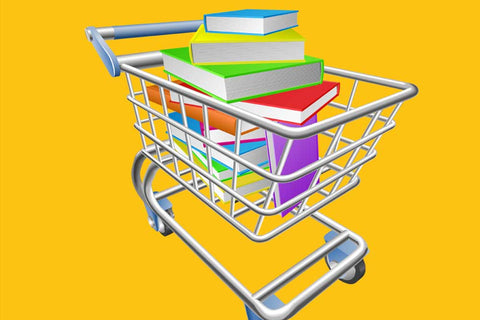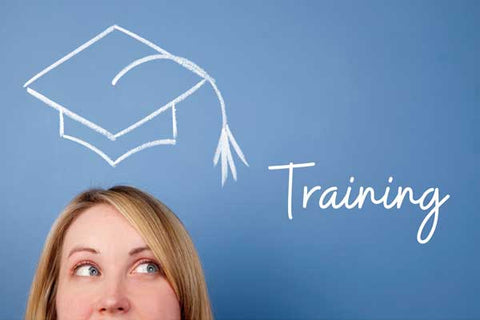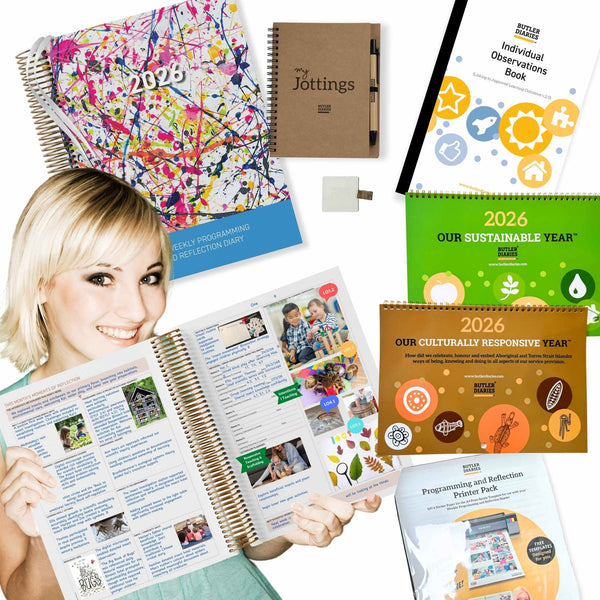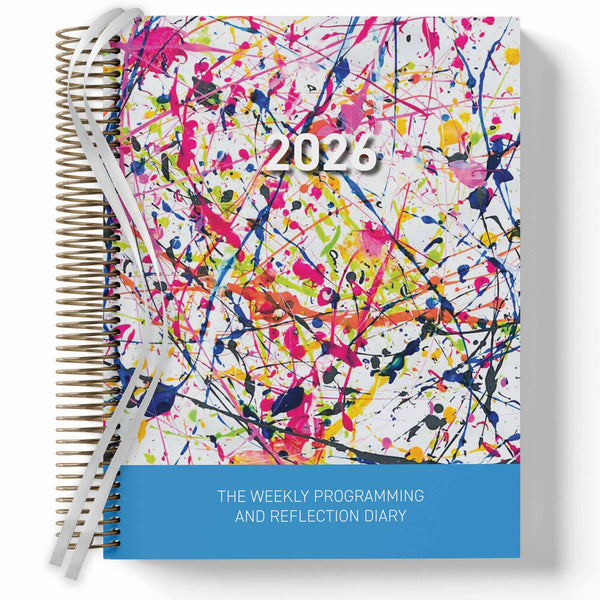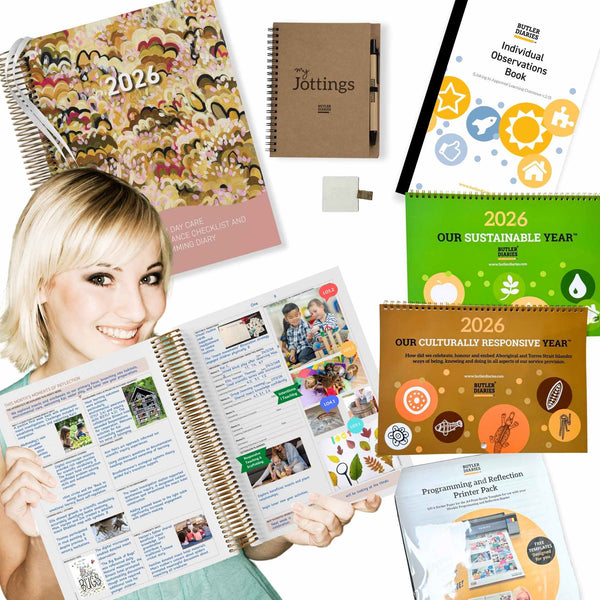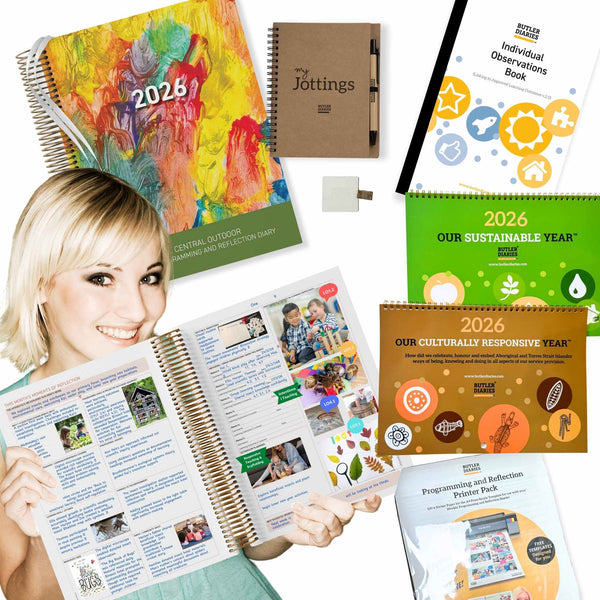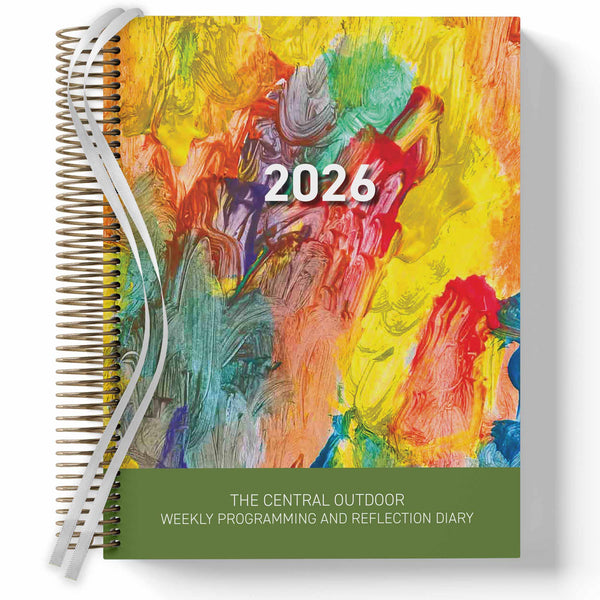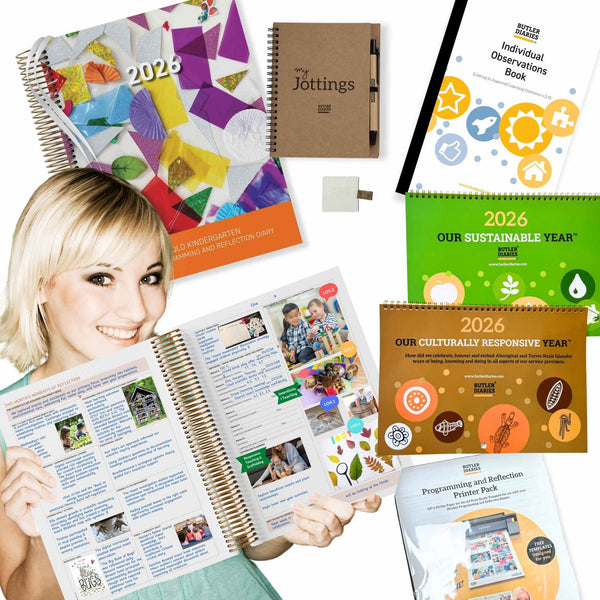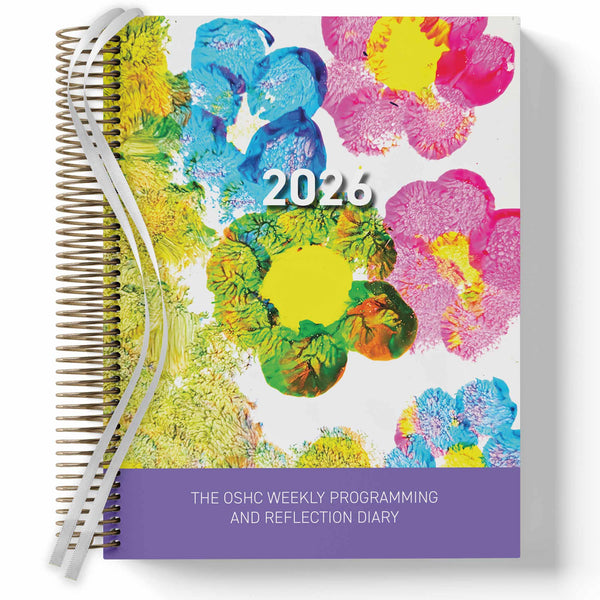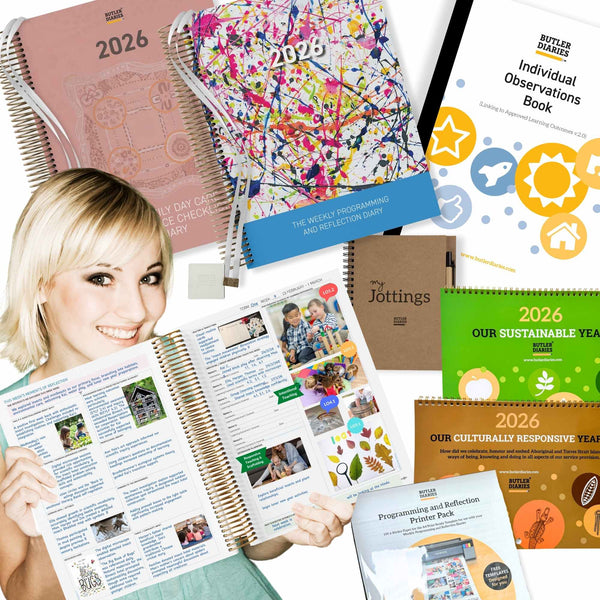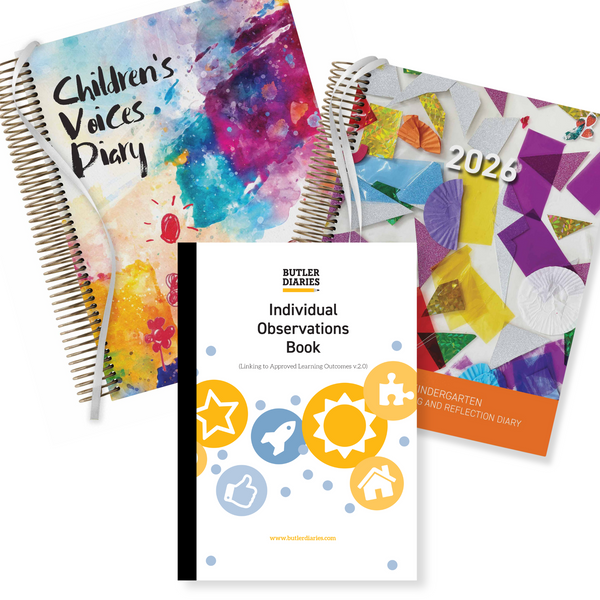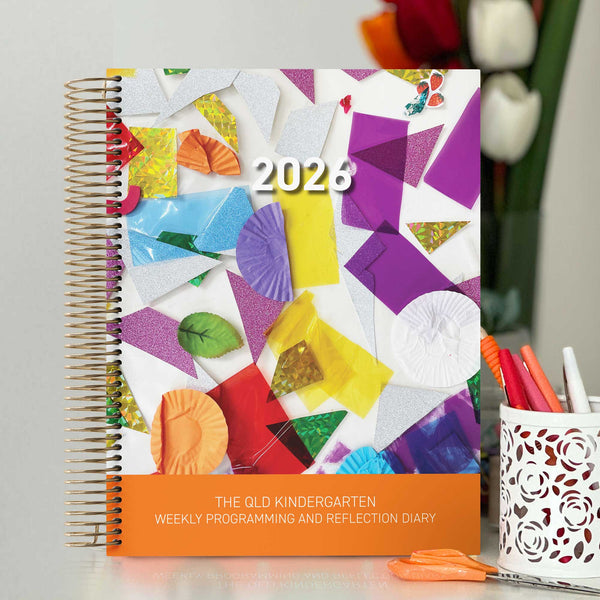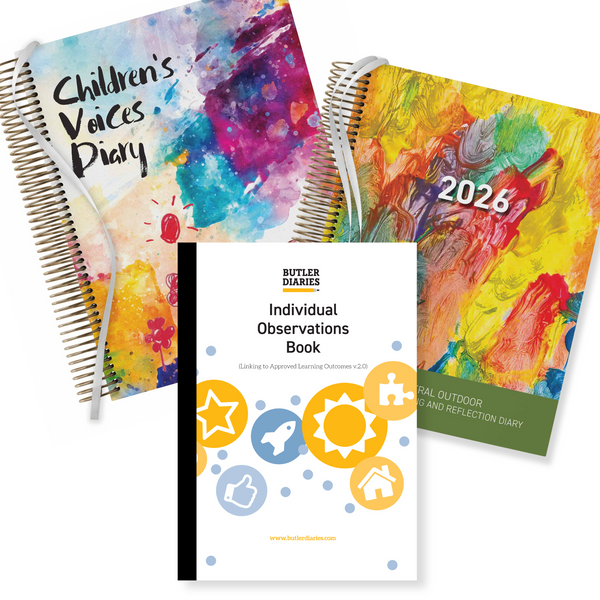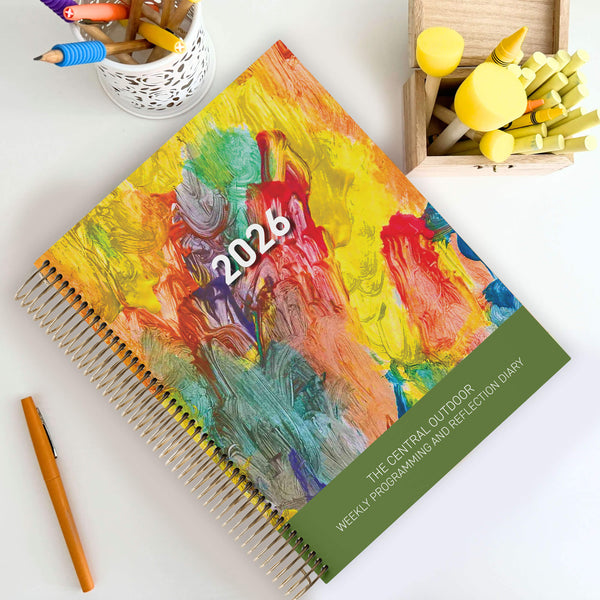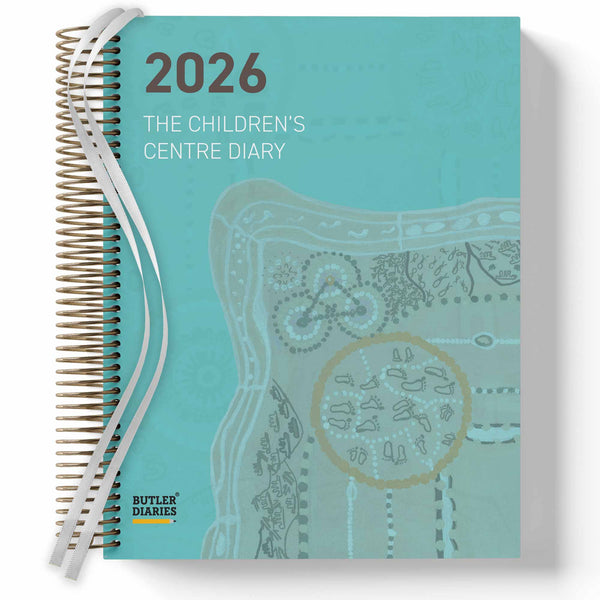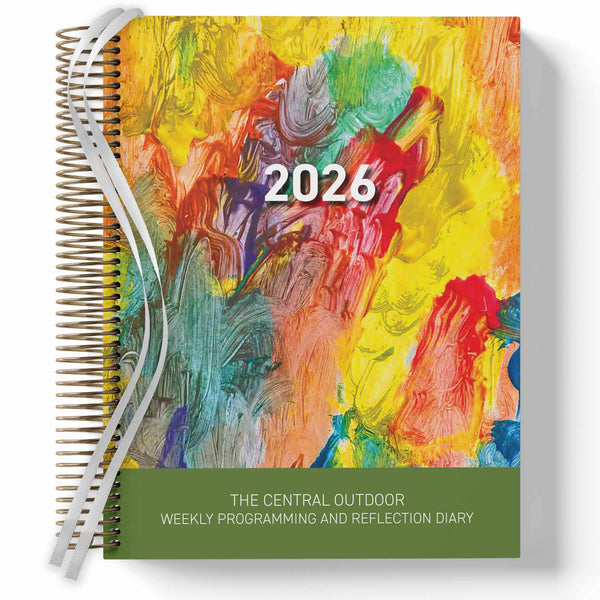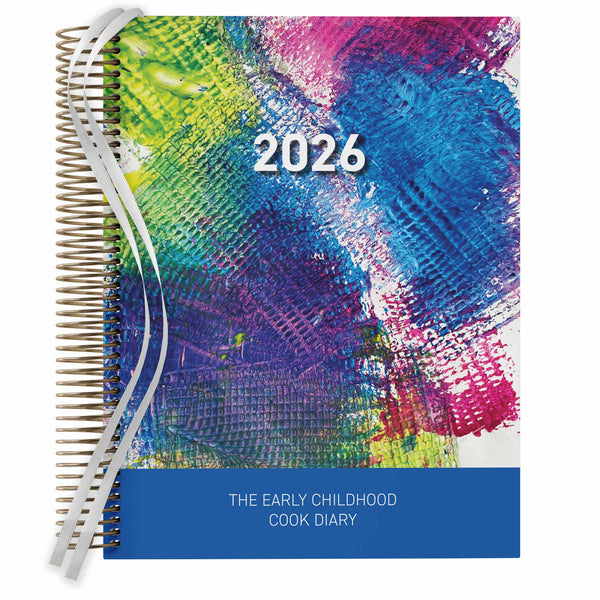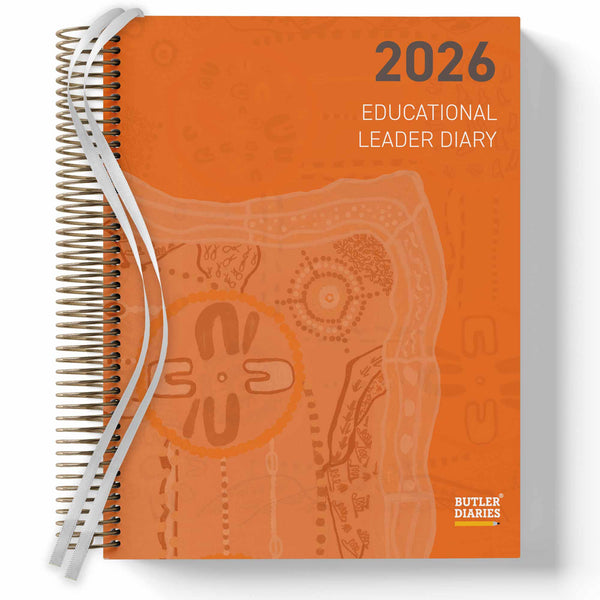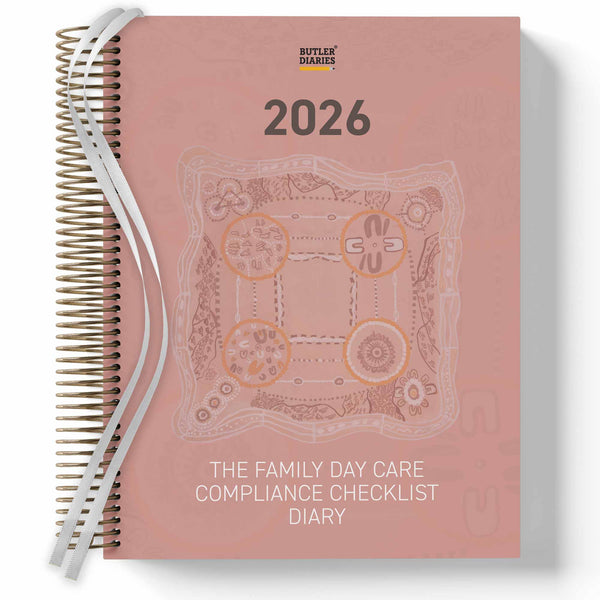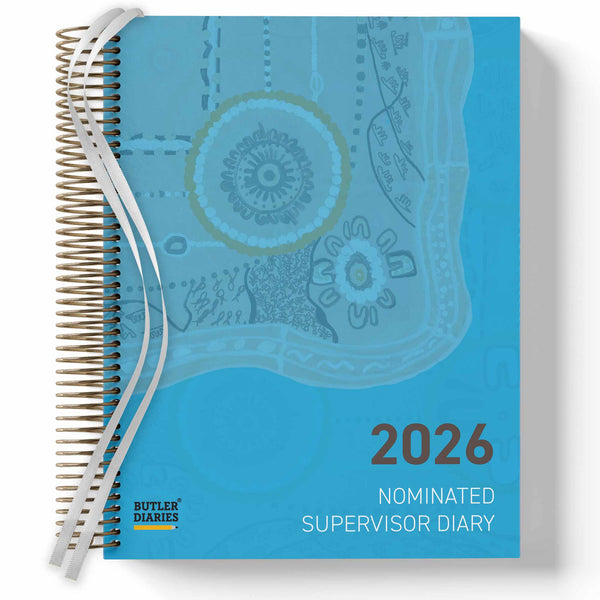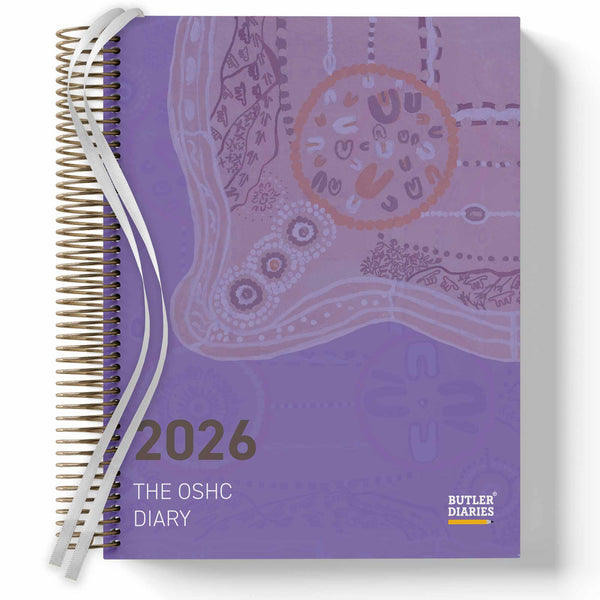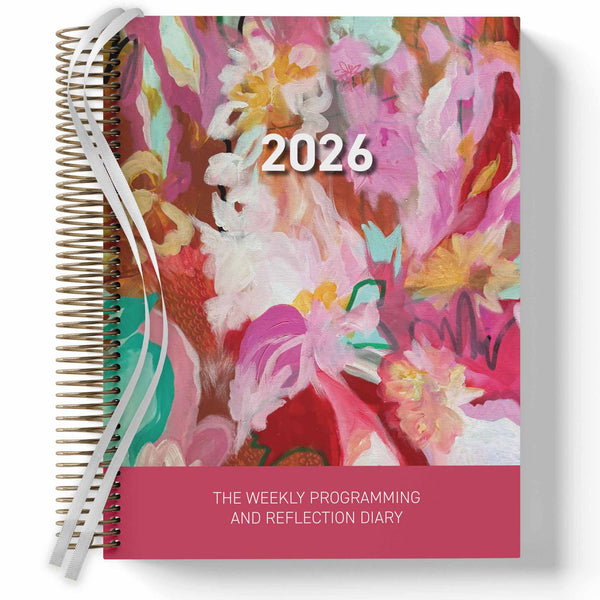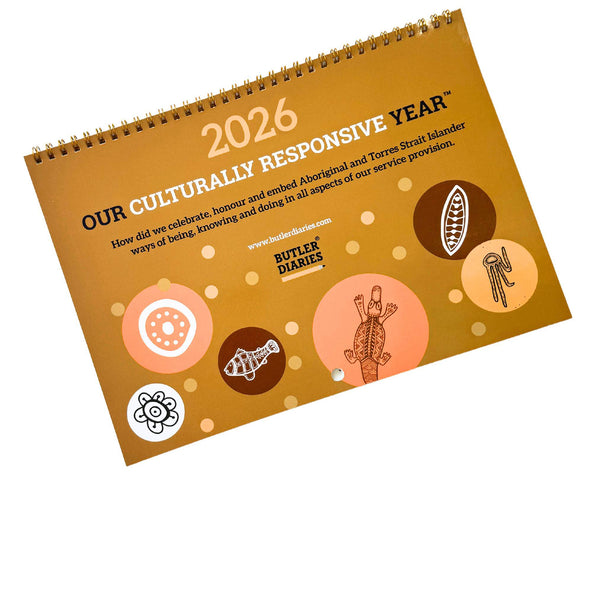Tracking developmental milestones is essential for meeting EYLF (Early Years Learning Framework) compliance in Australian early childhood education. It helps educators monitor a child’s growth across physical, cognitive, social, emotional, and language areas while aligning learning programs with EYLF outcomes. Here’s how you can effectively implement milestone tracking:
- Understand Milestone Tracking: It involves observing and assessing children’s development within expected age ranges to identify achievements or areas needing support.
- Meet EYLF Requirements: EYLF focuses on documenting children’s learning to guide programming. Use varied observation methods like notes, assessments, and family input.
- Support EYLF Outcomes: Link observations to EYLF’s five outcomes: Identity, Community, Wellbeing, Learning, and Communication. Tailor activities to children’s developmental stages.
- Choose the Right System: Look for systems that are easy to use, allow for personalised learning, and support team and family collaboration.
- Document Effectively: Use tools like notes, photos, and learning stories. Spread observations across different activities and times for a complete picture.
- Use Data for Planning: Analyse milestone data regularly to refine learning plans and ensure activities align with developmental needs.
Milestone tracking not only ensures compliance but also enhances learning experiences by focusing on each child’s unique developmental journey. Tools like Storypark, Educa, and Butler Diaries can simplify the process, offering features tailored to EYLF requirements.
Choosing and Setting Up a Milestone Tracking System
Selecting the right milestone tracking system is crucial for meeting EYLF compliance while fitting smoothly into your daily routines. Below, we’ll walk through what to look for in a system and how to get it up and running effectively in your setting.
What to Look for in a Tracking System
An effective milestone tracking system should align with the EYLF outcomes, enabling you to link observations directly to the five key learning outcomes: Identity, Connectedness, Wellbeing, Active Learning, and Communicating. This connection turns everyday observations into meaningful documentation that supports compliance.
Your system should also allow for personalised learning. By recording each child's interests, behaviours, and developmental needs, you can move away from a generic, one-size-fits-all approach and tailor learning experiences to each child.
Ease of use is another key feature. Look for systems that support ongoing observations, offer quick entry methods, and are straightforward. Seamless integration with planning processes ensures you can track progress regularly without interrupting your teaching flow.
Flexibility is essential. Your system should accommodate various documentation formats - such as written notes, photos, and videos - so you can capture the many ways children demonstrate their development.
Collaboration is another important factor. Choose a system that allows input from families, educators, and even the children themselves. This holistic approach provides a fuller picture of each child’s growth across different environments.
A good tracking system should also help you monitor progress over time. By mapping development in specific areas, you can identify patterns, celebrate achievements, and pinpoint where additional support might be needed.
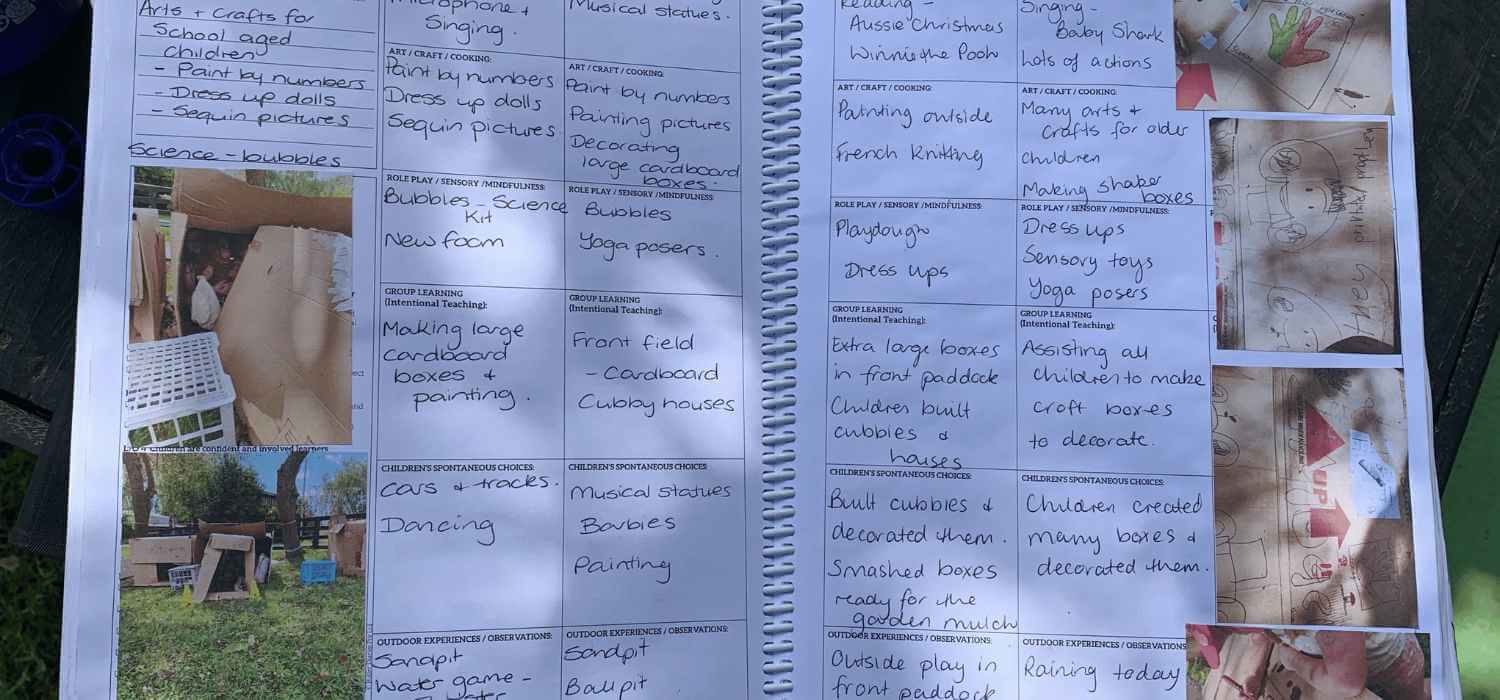 Setting Up Your Tracking System
Setting Up Your Tracking System
Start by creating detailed child profiles that capture developmental baselines, family input, and individual interests. These profiles will serve as the foundation for all future observations and tracking. Turn these profiles into workable goals.
Next, define milestone categories that align with both EYLF outcomes and the five developmental areas outlined by the NQS: physical, social, emotional, cognitive, and language development. This ensures your system is aligned with regulatory requirements from the outset.
To ensure every child gets regular attention, establish observation schedules. Whether you use checklists, portfolios, or rotation systems, these schedules ensure all developmental areas are consistently covered.
![]() Incorporate milestone tracking into your planning by setting aside time for regular reviews. Weekly or fortnightly sessions to analyse collected data can help refine learning experiences and align them with each child’s developmental progress.
Incorporate milestone tracking into your planning by setting aside time for regular reviews. Weekly or fortnightly sessions to analyse collected data can help refine learning experiences and align them with each child’s developmental progress.
Clear communication with families is also vital. From the start, outline how they can share observations from home and how you’ll keep them informed about their child’s milestones. This partnership strengthens the connection between home and centre learning. A tool like the Individual Observation Book built with duplicate pages makes it easy to keep records for yourself and share children’s learning with families.
Lastly, train your team on the chosen system to ensure consistency. Make sure everyone knows how to link observations to EYLF outcomes and maintain high-quality documentation that meets compliance standards.
Tools and Resources for Australian Educators
A range of tools can support Australian educators in maintaining thorough and efficient milestone tracking. Digital platforms like Storypark, Educa, and Seesaw offer real-time documentation, photo-sharing, and family collaboration features, all designed to align with EYLF requirements.
For structured methods, observation tracking sheets like those in the Programming and Reflection Diaries and templates like the Individual Observation Book can simplify the process of recording and linking observations to EYLF outcomes. Using these consistently reduces administrative workload while ensuring comprehensive documentation.
The Programming and Reflection Diaries from Butler Diaries, include sections dedicated to tracking, linking learning to EYLF outcomes, reflection prompts tied to EYLF, and compliance documentation. These spiral-bound, hard-cover Diaries are designed specifically for Australian early childhood educators.
Butler Diaries also offers digital courses for $9.99, providing step-by-step guidance on how to maximise the diaries’ features. These courses include practical tips for compliance and planning, making it easier to integrate milestone tracking into your daily workflow.
Emerging AI-powered tools are also becoming available, offering support with documentation, planning, and reporting. These tools can help reduce administrative tasks while ensuring alignment with EYLF requirements. Start small by implementing pilot programs and gathering feedback from your team before rolling them out more broadly. You can get an idea of how to integrate AI with your existing programming systems in this article.
Ultimately, the best milestone tracking tools are those that fit naturally into your existing workflows. Choose options that make compliance documentation feel like a seamless part of your day-to-day teaching, so you can focus on providing quality early childhood education.
Step-by-Step Guide to Tracking and Documenting Milestones
Once your tracking system is set up, the real task is to consistently observe and document. This hands-on approach not only captures meaningful developmental moments but also ensures you meet EYLF compliance standards.
Observing and Recording Milestones
Tracking milestones effectively starts with clear, specific observations that reflect the context and the child’s mood. Everyday interactions can become valuable developmental insights when approached thoughtfully.
Daily observations are essential. A quick note during free play can highlight key moments like a child’s first attempt at resolving a conflict, using a new word, or mastering a physical skill. These small but significant details provide a window into their development. Jottings like these can simply be captured in a Jottings Pad or Notebook.
More structured observations are invaluable, providing insight into the child’s learning through time sampling, ancedotal documentation, or short learning stories, and providing guidance for you. The Individual Observation Book, for example, has been designed with a template flow that helps you capture key details, like the child’s voice, what occurred, the evaluation, and next steps, and quick and easy linking to EYLF and MTOP outcomes with a checklist.
Photographs can add another layer to your records. A snapshot of a child using scissors for the first time, paired with notes on their focus and technique, creates a well-rounded record. Capture the process, not just the final achievement, to show the full journey.
Structured tools like checklists and developmental scales can help track specific skills systematically across all children. However, balancing these with more open-ended observations ensures a complete picture of each child’s progress.
Timing matters too. Spread your observations across different times of the day, activities, and social settings. For instance, a child who seems quiet in a large group might shine as a leader in smaller, more intimate settings.
Once your observations are thorough, the next step is to connect them to EYLF outcomes.
 Linking Observations to EYLF Outcomes
Linking Observations to EYLF Outcomes
Detailed records are the foundation for linking observations to EYLF outcomes, ensuring both compliance and meaningful documentation. Start by reviewing your notes, photos, videos, and learning stories. Look for recurring themes, behaviours, and interests that highlight a child’s social, emotional, cognitive, or physical development.
Match your observations to specific EYLF outcomes. The framework’s five key learning outcomes provide a guide for connecting each child’s skills and interests to their developmental progress.
Use plain, everyday language rather than formal codes to make your documentation more relatable. Use codes like "Outcome 3.2" for your own reference; however, in the body of the observation, you could say, "Sarah’s willingness to try new foods during lunch shows her growing confidence in making healthy choices and her developing sense of wellbeing." This approach makes the documentation clear for families and colleagues while emphasising the child’s overall journey.
Sometimes, a single observation can reflect multiple outcomes. For example, a child building a block tower with peers might demonstrate identity development (Outcome 1) through role-playing, a sense of community (Outcome 2) through teamwork, and communication skills (Outcome 5) through negotiation and explanation.
By focusing on progress over time rather than isolated achievements, you not only strengthen compliance documentation but also gain valuable insights for planning.
Using Milestone Data in Planning and Reflection
Integrating milestone data into your planning enriches each child’s developmental experience while ensuring EYLF compliance. Analysing patterns in your observations can reveal trends among individuals or groups, helping you set personalised learning goals.
This data also guides targeted teaching moments. Knowing where each child is in their development allows you to create activities that meet their needs while offering the right level of challenge and support.
Reflection is key. Regularly review how children respond to planned activities and use this feedback to refine your strategies. These reflections can improve both individual and group plans, and they’re a great way to involve families in the learning process.
A tool like the Programming and Reflection Diaries from Butler Diaries program an all-in-one programming and reflection tool that helps you plan for individual children, critically reflection, and extend on learning in the following week’s program.
"Intentional teaching means that everything you do as a teacher has a specific goal and purpose" – Gordon & Browne, 2016
 Reporting and Analysing Milestone Data
Reporting and Analysing Milestone Data
This section dives into how to turn your detailed milestone observations into strategic reports that not only meet compliance standards under the Early Years Learning Framework (EYLF) but also keep families informed and improve your educational programmes. By following these guidelines, you can create concise, actionable reports that satisfy auditors, engage families, and enhance your teaching strategies.
Creating Reports for EYLF Compliance
To create reports that align with EYLF requirements, start by structuring your observations around the framework's five key learning outcomes. Each report should clearly link a child's developmental progress to these outcomes, showing a well-documented learning journey. This method ensures compliance while giving families meaningful updates about their child's growth.
Organise your reports in chronological order, beginning with initial observations and then tracking key milestones over time. Include specific dates, contexts, and details to demonstrate intentional teaching practices that align with EYLF goals. For example, instead of using technical jargon, write in a way that families can easily understand, such as: "Emma is enhancing her social skills by sharing toys and taking turns during playtime."
Adding visual elements, such as photos or work samples, can make reports more engaging and provide tangible evidence of progress. For instance, a photo of a child using scissors, paired with notes about their concentration and grip technique, offers clear proof of fine motor skill development. This approach serves both compliance needs and family interests.
Once your reports are ready, analysing the data for patterns and trends can further refine your teaching approach and improve outcomes.
Analysing Milestone Data for Trends
Regularly reviewing milestone data allows you to identify developmental trends and make timely adjustments to your teaching strategies. Conduct weekly or fortnightly reviews to spot emerging patterns, which can inform targeted interventions or programme enhancements.
Look for trends across the group. For example, if several children struggle with resolving social conflicts, you might introduce structured activities to build social-emotional skills. On the other hand, if many children are excelling in language development, consider adding more advanced literacy exercises to challenge them further.
Compare each child's progress against developmental milestones, keeping in mind that every child develops at their own pace. Simple tracking sheets can help you map progress across areas like physical, cognitive, and social development, making it easier to identify children who may need extra support or enrichment.
Incorporate data from various sources - such as attendance records, family feedback, and jottings - to gain a broader understanding of each child's development. Parent feedback can also provide valuable insights into behaviours and achievements at home. When home and centre observations align, they reinforce your assessments; when they differ, they open up meaningful conversations about creating consistency across environments.
Creating portfolios of each child's work is another effective way to document progress and highlight developmental patterns. A tool like the My Amazing Year Children’s Learning Journal is perfect for capturing learning data across EYLF outcomes. These portfolios not only serve as evidence of growth but also help in planning future learning experiences tailored to each child's needs.
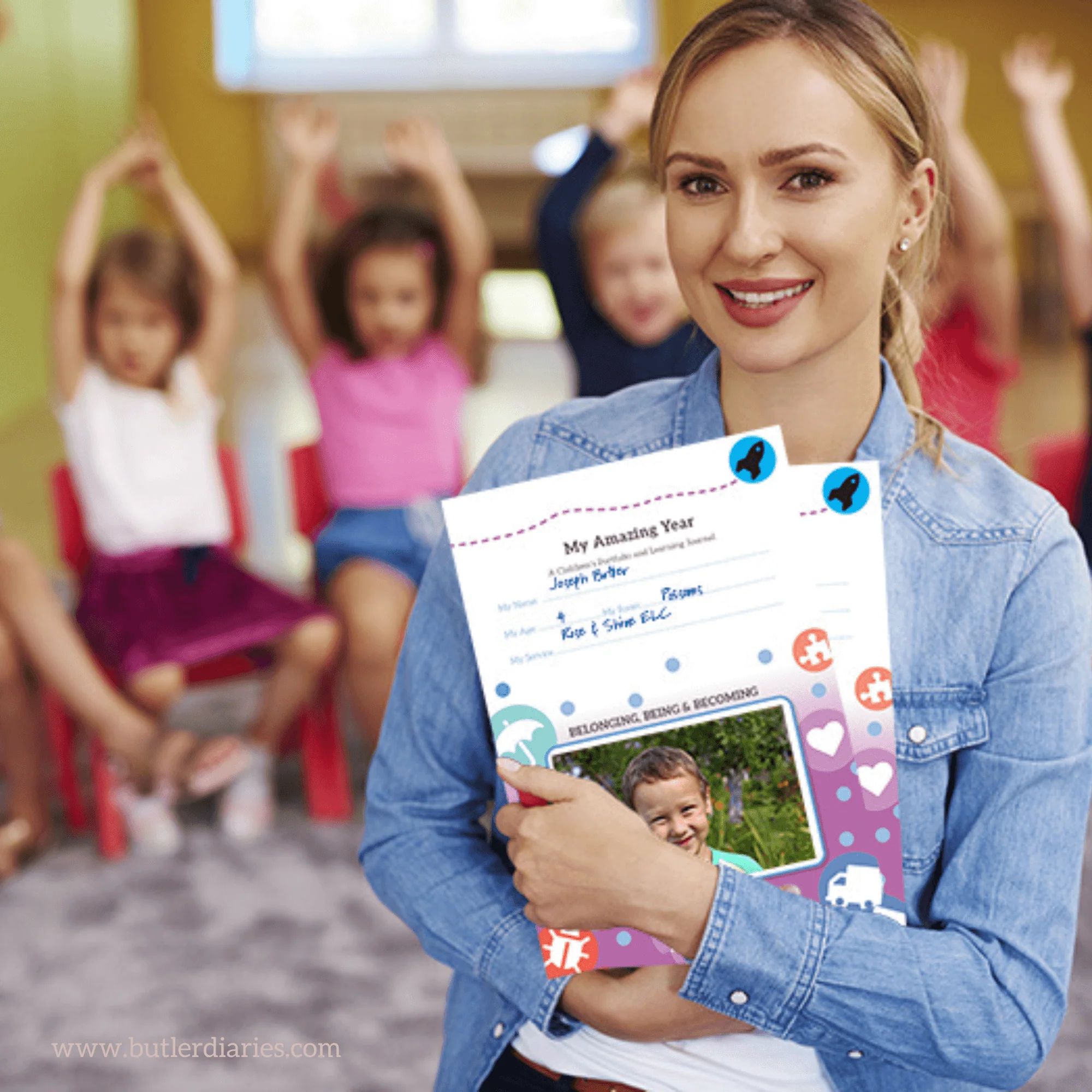 Maintaining open communication with families is crucial. Schedule regular meetings or discussions to share milestone data and gather insights about each child's interests, challenges, and achievements.
Maintaining open communication with families is crucial. Schedule regular meetings or discussions to share milestone data and gather insights about each child's interests, challenges, and achievements.
Presenting Progress in Summary Tables
Summary tables are an excellent way to present detailed observations and trend analyses in a clear, easy-to-understand format. These visual tools allow families and auditors to quickly grasp a child's progress while ensuring all necessary documentation for compliance is in place.
Develop tables that summarise each child's abilities across key areas such as physical development, communication, social-emotional growth, cognitive skills, and learning approaches. Use simple labels like "emerging", "developing," or "secure" instead of complicated scoring systems to make the information accessible.
Comparison tables can highlight individual progress relative to general developmental expectations, but the focus should always remain on personal growth rather than comparisons between children. Group summary tables and timelines can also help educators and families visualise milestone achievements and identify areas needing additional support.
When sharing this information with families, focus on positive communication. Highlight achievements while addressing areas for improvement in a supportive way. Always maintain confidentiality by anonymising data in group reports - use initials or codes instead of full names to protect privacy when sharing documents beyond your immediate team.
sbb-itb-706bda8
Overcoming Challenges in Milestone Tracking
Implementing milestone tracking systems can be tricky for educators. However, understanding the roadblocks and having practical solutions at the ready can turn this daunting task into a manageable and meaningful practice. This not only supports compliance with the Early Years Learning Framework (EYLF) but also enhances children's development. Let’s dive into some common challenges and how to tackle them effectively.
Common Challenges in Tracking
One of the biggest hurdles educators face is excessive documentation. Studies show that over three-quarters of Australian educators work an average of nine unpaid hours weekly. On top of that, 73% feel their heavy workloads are compromising the quality of care they provide. This creates a cycle where more time is spent on paperwork than directly engaging with children.
Another challenge lies in the variability of children's development. Each child grows at their own pace, which makes applying standardised tracking methods difficult. For example, a child might excel in communication but need extra support with physical milestones, or vice versa. This diversity can leave educators questioning whether their tracking methods truly reflect each child’s progress.
Confidentiality concerns also play a role. Educators must balance the need for transparency with the responsibility to protect sensitive information about children’s development, all while meeting EYLF documentation requirements.
Finally, time constraints are a major obstacle. Research indicates that educators spend less than 30% of their time in uninterrupted interaction with children. This leaves little room for thoughtful milestone documentation and reflection.
Practical Solutions for Educators
To address these challenges, here are some actionable strategies:
- Simplify documentation processes by integrating observations into daily routines. For instance, use checklists with children’s names to quickly note observations or rely on quick jottings. Keep tools like tablets, notebooks, or cameras nearby to capture milestone moments on the fly, adding brief notes later when time allows.
- Set clear team guidelines to ensure consistency. Collaborate with staff to create a shared guide for documenting milestones. Regular team meetings can also help address questions and fine-tune tracking methods.
- Engage families as partners in the process. Invite parents to share their observations and goals for their children. This not only eases the documentation burden on educators but also provides valuable insights into what children are learning and experiencing at home.
- Prioritise quality over quantity when recording milestones. Focus on significant moments that clearly demonstrate progress toward EYLF outcomes, rather than trying to document every minor detail.
- Use technology to your advantage. Tools like tablets and simple video apps can help you document achievements while actively engaging with children.
- Collaborate with your team by regularly reflecting on observations and plans together. This not only improves the quality of tracking but also spreads the workload more evenly.
- Manage time effectively with tools like the Eisenhower Matrix, which helps categorise tasks by urgency and importance. Focus on critical documentation first, tackling less urgent tasks when time permits.
Maintaining Best Practices
Once you’ve tackled the challenges, adopting best practices can help you build a solid milestone tracking system.
- Set aside time for reflection. Schedule brief weekly reviews to evaluate what’s working and what needs adjustment in your tracking process. This keeps your system effective and manageable.
- Create individual portfolios for each child. These should include observations, learning stories, and milestones, providing a comprehensive record that supports EYLF compliance and meaningful discussions with families.
- Keep learning. Stay updated on new strategies and tools for milestone tracking. Professional development opportunities can introduce methods that simplify documentation while improving outcomes for children.
- Set boundaries to avoid burnout. Learn to say "no" to tasks that stretch you too thin, and try to avoid taking work home whenever possible.
- Encourage open communication within your team about workloads and deadlines. Address challenges as they arise to prevent frustration from building up. Regular check-ins can help identify and resolve issues early.
"The more you exercise your ability to tell the truth about what's working and what's not working, the faster you'll make progress." – Mark Pettit
- Use tools tailored to your needs. Resources like Butler Diaries offer compliance tools and organisational aids specifically designed for Australian early childhood education settings. These can help reduce the administrative load while keeping you aligned with EYLF requirements.
- Build flexible systems that adapt to changing circumstances, whether that’s new staff, new children, or shifts in EYLF guidelines. Your tracking system should evolve alongside the children’s interests and developmental stages, creating a dynamic and child-centred learning environment.
Conclusion
Milestone tracking serves as a vital link between understanding natural child development and meeting EYLF compliance. When approached thoughtfully, it transforms complex documentation into practical insights that benefit children, families, and educators alike.
By focusing on developmental milestones, educators and parents gain a clearer picture of a child's growth, ensuring key stages are met along the way. Even more importantly, it allows for the early identification of developmental delays, enabling timely interventions that can make a real difference. This proactive approach ensures children get the support they need at the right time.
Understanding each child's developmental journey also empowers educators to create tailored learning plans. These plans align with EYLF principles, reflecting a commitment to respecting and supporting every child's unique learning path.
The benefits extend beyond the classroom. Keeping parents informed fosters collaboration, creating a unified approach to education. When families and educators share milestone data, children benefit from consistent support across all settings, reinforcing their development and learning.
Milestone tracking, therefore, goes beyond compliance - it enriches the educational experience for everyone involved.
Key Takeaways
Effective milestone tracking for EYLF compliance is centred on documenting a child's progress to support their learning outcomes. This documentation provides clear evidence of a child's growth, skills, and interests, while celebrating their unique achievements. It also demonstrates how your programme aligns with EYLF outcomes, making it an essential tool for compliance.
The real key lies in connecting observations to planning. By linking records to child-centred activities, educators can design experiences that align with developmental milestones and individual interests. This ensures milestone tracking not only meets regulatory requirements but also genuinely enhances children's learning experiences.
Authentic observations - capturing children in their natural play and learning environments - are another cornerstone of effective milestone tracking. These moments provide genuine insights into development across all five EYLF outcomes. Whether it's a toddler's first words or a preschooler's problem-solving efforts, these observations form the foundation of meaningful compliance documentation.
Investing in robust milestone tracking systems delivers benefits far beyond ticking compliance boxes. It equips educators to better support each child's growth, strengthens family engagement, and enables the creation of learning programmes that truly respond to children's evolving interests and abilities - all while ensuring compliance and enriching learning outcomes.
FAQs
How does milestone tracking support children's learning while ensuring EYLF compliance?
Milestone tracking is an essential tool in understanding and supporting children's learning journeys. By monitoring progress, educators gain a clear view of each child's strengths, areas where they might need extra help, and their budding interests. This insight helps create learning experiences that are tailored to suit the unique needs of each child.
While it ensures alignment with the Early Years Learning Framework (EYLF), milestone tracking goes further by strengthening the connection between educators and families. It provides families with detailed updates on their child's development, fostering transparency and trust. Additionally, it helps spot potential challenges early on, enabling timely interventions that encourage well-rounded growth and development in children.
How can families be involved in tracking their child's milestones under the EYLF?
Engaging families in tracking milestones is a key step in creating a strong partnership that supports a child’s overall development. Here are a few ways to bring families into the process effectively:
- Provide clear updates: Share concise progress summaries that highlight milestone achievements and areas where growth is needed. This keeps families informed and involved.
- Use visuals and examples: Photos or specific examples of their child’s activities can make progress feel more tangible and relatable.
- Share helpful resources: Offer simple guides or practical tips on child development to explain the significance of milestones and how they align with the Early Years Learning Framework (EYLF).
- Encourage open dialogue: Create spaces where families feel comfortable asking questions, sharing their own observations, and contributing insights about their child’s progress.
By maintaining consistent communication and offering support, you not only make milestone tracking easier but also strengthen the bond between home and early learning settings.
How can educators manage EYLF documentation effectively while saving time?
Educators can simplify their Early Years Learning Framework (EYLF) documentation by concentrating on key observations and adopting efficient recording techniques that meet compliance standards. By focusing on quality rather than quantity, documentation becomes more purposeful and less burdensome.
Customised organisational tools, such as those provided by Butler Diaries, can be a game-changer. These tools are specifically designed to streamline tasks like tracking, reporting, and planning, helping educators manage compliance while staying on top of their daily responsibilities in early childhood education.
